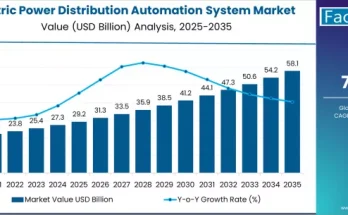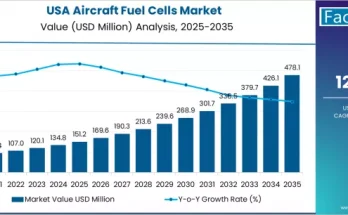The global Transparent Fibers Market is witnessing unprecedented growth, with its value projected to expand from USD 3.8 billion in 2025 to USD 14.8 billion by 2035, at a remarkable CAGR of 14.6%. This growth is propelled by the increasing demand for lightweight, optically clear, and high-strength materials across diverse industries including aerospace, automotive, electronics, and healthcare.
Market Overview
Transparent fibers, which include polymer-based fibers, glass-based fibers, and specialty composites, are emerging as critical materials for high-performance applications. Their integration in smart, sensor-enabled textiles, wearable technologies, minimally invasive medical instruments, and flexible electronics is redefining material innovation and enhancing operational efficiencies. The market is also being accelerated by advances in nanotechnology, high-performance composites, and sustainable polymer solutions, positioning transparent fibers as a core enabler of modern industrial and consumer applications.
Component and Material Insights
Among material types, polymer-based fibers currently lead with a 35% market share in 2025 and are projected to grow at 14.3% CAGR, driven by their lightweight, durable, and flexible properties. Glass-based transparent fibers are growing at a slightly faster rate of 14.5% CAGR, owing to their optical clarity and mechanical robustness. Specialty composites and advanced materials further expand the potential for high-performance applications in automotive, aerospace, and smart infrastructure.
In terms of fiber forms, monofilament fibers are rapidly gaining traction for applications requiring uniformity, clarity, and tensile strength, particularly in medical sutures, optical sensors, and high-precision textiles. Multifilament and fabric/woven forms are being deployed in textiles, construction, and flexible electronics, enabling versatile integration across industries.
Application-Driven Growth
Medical and healthcare devices are the fastest-growing application segment, benefiting from transparent fibers’ biocompatibility, optical precision, and flexibility. These fibers are increasingly used in minimally invasive surgical instruments, endoscopic imaging systems, and smart diagnostic devices, helping improve patient safety, accuracy, and real-time monitoring capabilities.
Other key applications include:
-
Optical communication and data transmission, leveraging polymer and glass-based fibers for high-speed connectivity.
-
Defense and security, through smart textiles and wearable devices.
-
Consumer electronics, enabling flexible displays, sensors, and lightweight wearable products.
-
Automotive and aerospace, providing lightweight composites that enhance fuel efficiency and structural performance.
-
Construction and architecture, incorporating aesthetically transparent, high-strength materials.
Regional Insights
-
North America leads adoption due to its advanced R&D infrastructure, high-tech healthcare, aerospace, and electronics industries, and growing emphasis on sustainable material solutions.
-
East Asia, particularly China, dominates production with large-scale fiber manufacturing, cost-competitive polymer-based fibers, and rapid adoption in electronics and consumer tech. The country’s government-backed industrial policies and 5G infrastructure rollout further accelerate market penetration.
-
Western Europe, led by Germany, emphasizes engineering excellence, sustainability, and high-quality specialty fibers, supporting applications in automotive, aerospace, and environmentally friendly construction projects.
Country-specific growth rates highlight China as the fastest-growing market (15.0% CAGR), followed by the United States (13.7% CAGR) and Germany (27.7% CAGR), reflecting strong regional initiatives in innovation, manufacturing capacity, and sustainability integration.
Market Drivers and Trends
The transparent fibers market is propelled by:
-
High-performance requirements for lightweight, durable, and optically clear materials.
-
Integration of smart fibers with sensors for healthcare monitoring, wearable devices, and defense applications.
-
Sustainability initiatives, including recyclable polymers and biodegradable materials, which address environmental concerns and regulatory pressures.
-
Advancements in nanotechnology, improving optical clarity, conductivity, and mechanical strength.
Challenges and Market Restraints
Despite strong growth prospects, the market faces challenges including high production costs, complex manufacturing processes, and scalability issues. Regulatory compliance in medical, aerospace, and consumer electronics may delay adoption. Additionally, traditional materials remain a competitive substitute in some industries, necessitating ongoing R&D, cost reduction, and industry awareness campaigns.
Competitive Landscape
The transparent fibers market is highly competitive, with leading players including Corning Incorporated, Prysmian Group, Sumitomo Electric Industries, Furukawa Electric Co., Fujikura Ltd., and YOFC. These companies leverage advanced R&D, large-scale production capabilities, and global supply networks to innovate in low-loss optical clarity, bend-insensitive designs, and eco-friendly fibers.
Emerging start-ups are driving innovation in biodegradable fibers, smart sensor-integrated fibers, and specialty composites, complementing established players and accelerating adoption in niche and emerging markets. Collaboration between large multinationals and agile innovators ensures a dynamic, innovation-driven competitive environment.
Recent Developments
-
March 2025: HFCL announced Eka™ Optical Fiber at the FTTH Conference 2025, featuring low attenuation and strong macro-bending performance, supporting both rural and urban 5G connectivity.
-
January 2025: TECNO unveiled Starry Optical Fiber Technology at CES 2025, integrating ultra-fine optical fibers with mini-LEDs in smartphone covers, combining aesthetics with functional fiber optics.
Outlook and Opportunities
As industries increasingly prioritize lightweight, optically precise, and multifunctional materials, the transparent fibers market is expected to offer significant opportunities for manufacturers and technology providers. The integration of smart, sensor-enabled fibers, sustainable polymers, and nanotechnology-enhanced composites will continue to drive innovation and market differentiation, making transparent fibers a cornerstone of next-generation industrial, healthcare, and consumer applications.
Fact.MR’s 2025 survey of over 10,000 respondents across 30 countries, including end-users, industry experts, and technology developers, provides actionable insights on adoption patterns, material innovations, regulatory compliance, and sustainability-driven strategies. This comprehensive analysis empowers stakeholders to navigate the fast-growing Transparent Fibers Market with confidence and strategic foresight.
Browse Full Report : https://www.factmr.com/report/transparent-fibers-market


